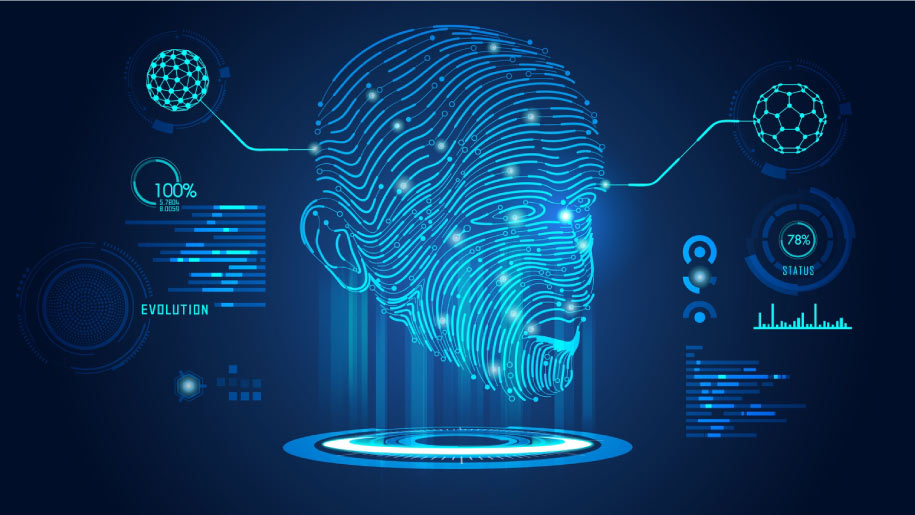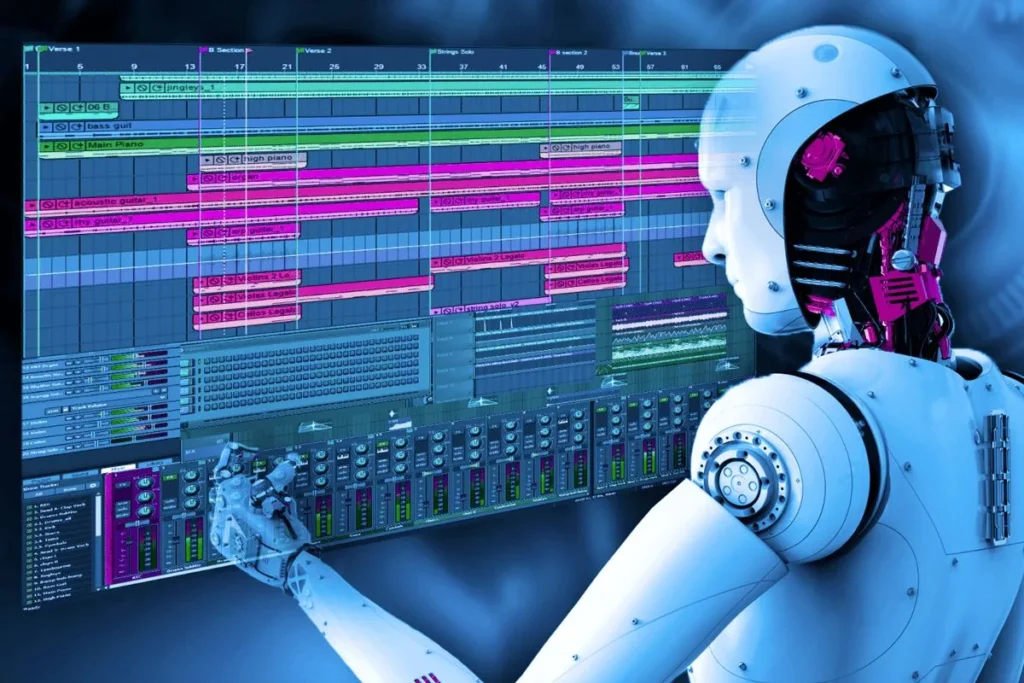Generative artificial intelligence
AI History:
The concept of artificial intelligence (AI) has been around for centuries, but the modern field of AI began in the 1950s. Early AI research focused on symbolic reasoning and logic-based systems, which were limited by their inability to handle ambiguity and uncertainty. In the 1980s and 1990s, AI research shifted towards statistical approaches and machine learning, which enabled AI systems to learn from data and handle more complex tasks. In recent years, deep learning has become the dominant approach in AI research, enabling breakthroughs in image and speech recognition, natural language processing, and other areas.
Generative AI :
Refers to AI systems that can generate new content, such as images, videos, music, or text. Generative AI systems can be trained using various techniques, such as autoencoders, variational autoencoders, and Generative Adversarial Networks (GANs). GANs are a powerful technique for generative AI and involve training two neural networks: a generator network that generates new content and a discriminator network that evaluates the quality of the generated content. GANs have been used to generate realistic images, videos, and even entire 3D environments and have potential applications in fields such as art, design, and entertainment.
Here’s a more detailed explanation of AI history and Generative AI:
AI History:
Artificial Intelligence (AI) is a field of computer science that focuses on building intelligent machines that can perform tasks that typically require human intelligence. The concept of AI has been around for centuries, but the modern field of AI began in the 1950s. Early AI research focused on symbolic reasoning and logic-based systems, which attempted to represent human knowledge and reasoning in computer programs. However, these systems were limited by their inability to handle ambiguity and uncertainty.
In the 1980s and 1990s, AI research shifted towards statistical approaches and machine learning, which enabled AI systems to learn from data and handle more complex tasks. Machine learning algorithms, such as decision trees, neural networks, and support vector machines, allow computers to learn from examples and make predictions or decisions based on that learning. This approach proved successful in various applications, from speech recognition to image classification.
Deep learning has become the dominant approach in AI research in recent years. Deep understanding involves training artificial neural networks with many layers, which can learn hierarchical representations of data. This approach has enabled breakthroughs in image and speech recognition, natural language processing, and other areas.
Generative AI:
Refers to AI systems that can generate new content, such as images, videos, music, or text. Generative AI systems can be trained using various techniques, such as autoencoders, variational autoencoders, and Generative Adversarial Networks (GANs).
Autoencoders are neural networks that can learn to compress data into a lower-dimensional representation and then reconstruct the original data from that representation. Variational autoencoders are a type of autoencoder that can understand a probability distribution over compressed pictures, allowing them to generate new data points similar to the original data.GANs are potential techniques for generative A and involve training two neural networks: a generator and discriminator networks. The generator network generates new content, while the discriminator network evaluates the quality of the generated content. The two networks are trained together in a game-like setting, where the generator network tries to create increasingly realistic content that can fool the discriminator network, and the discriminator network tests to identify whether the content is accurate or generated correctly.
GANs have generated realistic images, videos, and even entire 3D environments. They have potential applications in art, design, and entertainment. For example, GANs can develop new clothing, furniture strategies, or realistic virtual environments for video games or movies.
What are some limitations of Generative AI?
While Generative AI has shown great promise in generating new content, it also has limitations. Here are somefundamentalyruless to consider:
- Limited control over generated content: While Generative AI can generate new content, controlling that content’s specific features or characteristics can be challenging. For example, ensuring that the generated images have particular features, such as a specific color or shape, may be difficult in an image generation task.
- Dependence on training data: Generative AI models require high-quality training data to generate accurate and diverse content. The models may generate low-quality or limited variation content without sufficient training data.
- Limited generalization: Generative AI models are often trained on specific datasets and may struggle to generalize to new or unseen data. For example, a Generative AI model trained on images of cats may not be able to generate realistic ideas of other animals without additional training.
- Ethical and social implications: As Generative AI becomes more advanced, it raises moral and social consequences such as the potential for misuse or the creation of false or misleading content.
- Computationally intensive: Generative AI models can be computationally intensive and require significant processing power to generate high-quality content, limiting their practical applications.
While these limitations are essential to consider, research in Generative AI is ongoing, and new techniques are being developed to address these challenges.
In which industries are Generative AI models used?
Generative AI models have potential applications in a wide range of industries. Here are a few examples:
- Entertainment: Generative AI models can be used in the entertainment industry to create new content,t such as music, movies, and video games. For example, a Generative AI model can be trained to compose music in a particular style or generate new levels for a video game.
- Design: Generative AI models can be used in design industries such as fashion, architecture, and product design. For example, a Generative AI model can generate new strategies for clothing or furniture or create virtual prototypes of buildings or products.
- Healthcare: Generative AI models can be used in the healthcare industry to generate synthetic medical research data to improve medical imaging. For example, a Generative AI model can generate realistic medical images to train radiologists or help doctors diagnose diseases.
- Finance: Generative AI models can be used in the finance industry to generate synthetic data for risk analysis or to improve fraud detection. For example, a Generative AI model can be trained to create synthetic financial data to test the robustness of investment models or detect anomalies in financial transactions.
- Art: Generative AI models have been used in the art world to create new artworks or to enhance existing artworks. For example, a Generative AI model can be trained to generate new paintings or to add new elements to an existing artwork.
These are just a few examples, and as Generative AI technology continues to advance, we can expect to see it being used in many other industries as well.
How many productive artificial intelligence models do we have?
Providing an exact number of productive artificial intelligence (AI) models is difficult, as AI is constantly evolving, and new models are continually being developed. However, there are many established and widely used AI models that are considered to be productive in various applications. Here are a few examples:
- Convolutional Neural Networks (CNNs): CNNs are a type of neural network that’s particularly effective for image and video analysis tasks, such as image classification, object detection, and facial recognition.
- Recurrent Neural Networks (RNNs): RNNs are a type of neural network that can handle sequential data, such as natural language processing tasks, speech recognition, and time-series analysis.
- Generative Adversarial Networks (GANs): GANs are generative AI models for creating new content, such as images, videos, or music. GANs have been used for image synthesis, video generation, and 3D object modeling applications.
- Transformer models: Transformer models, such as the famous BERT (Bidirectional Encoder Representations from Transformers) model, have been widely used for natural language processing tasks, such as language translation, sentiment analysis, and question-answering.
- Reinforcement Learning models: Reinforcement Learning models are used in many applications, such as robotics and game playing, where an agent learns to take actions in an environment to maximize a reward signal.
These are just a few examples of productive AI models. Many other models and techniques are used in various applications across industries.
How can natural language generative models be used to produce news texts?
Natural language generative models can be used in the production of news texts in a variety of ways. Here are a few examples:
- Automated summarization: Natural language generative models can automatically summarize news articles for readers. This can be particularly useful for large news organizations that publish a high volume of content each day.
- Personalization: Natural language generative models can create personalized news articles for individual readers based on their interests and reading history. This can help to increase engagement and retention among readers.
- Breaking news alerts: Natural language generative models can quickly generate breaking news alerts that can be sent to subscribers via email, text message, or push notification.
- Content augmentation: Natural language generative models can augment news articles with additional content, such as related stories, background information, or multimedia elements like images and videos.
- News generation: Natural language generative models can automatically generate news articles from structured data sources, such as press releases or financial reports. This can be particularly useful for news organizations that cover niche topics or industries where there may not be a large pool of human writers.
It’s essential to note that using natural language generative models in news production can also raise ethical concerns, such as the potential for bias or inaccuracies in the generated content. It’s important to carefully evaluate the use cases and potential risks before implementing these models in a news production setting.
Generative artificial intelligence (AI) has many potential applications in everyday work. Here are a few examples:
- Content creation: Generative AI can create new content, such as articles, videos, and images. This can be particularly useful for marketing and advertising campaigns, where high volumes of content are needed.
- Design: Generative AI can generate new plans for products, buildings, or other structures. This can help to streamline the design process and reduce the time and cost associated with manual methods.
- Personalization: Generative AI can personalize content or products for individual users. For example, a generative AI system can generate personalized recommendations for products or services based on a user’s past behavior.
- Simulation: Generative AI can simulate complex systems or processes, such as weather patterns, traffic flows, or financial markets. These simulations can be used to test hypotheses or to develop predictive models.
- Optimization: Generative AI can optimize processes or systems, such as supply chain management or transportation routing. For example, a generative AI system can generate optimal routes for delivery trucks based on traffic patterns and delivery schedules.
- Creativity: Generative AI can enhance creativity and innovation in various fields. For example, a generative AI system can generate new ideas for product features or business strategies.
These are just a few examples of the potential applications of generative AI in everyday work. As the technology continues to evolve, we can expect to see it being used in many other areas.
What are the different applications of generative artificial intelligence in everyday work?
Generative artificial intelligence (AI) has many potential applications in everyday work. Here are a few examples:
- Content creation: Generative AI can create new content, such as articles, videos, and images. This can be particularly useful for marketing and advertising campaigns, where high volumes of content are needed.
- Design: Generative AI can generate new plans for products, buildings, or other structures. This can help to streamline the design process and reduce the time and cost associated with manual methods.
- Personalization: Generative AI can personalize content or products for individual users. For example, a generative AI system can generate personalized recommendations for products or services based on a user’s past behavior.
- Simulation: Generative AI can simulate complex systems or processes, such as weather patterns, traffic flows, or financial markets. These simulations can be used to test hypotheses or to develop predictive models.
- Optimization: Generative AI can optimize processes or systems, such as supply chain management or transportation routing. For example, a generative AI system can generate optimal routes for delivery trucks based on traffic patterns and delivery schedules.
- Creativity: Generative AI can enhance creativity and innovation in various fields. For example, a generative AI system can generate new ideas for product features or business strategies.
These are just a few examples of the potential applications of generative AI in everyday work. As the technology continues to evolve, we can expect to see it being used in many other areas.













